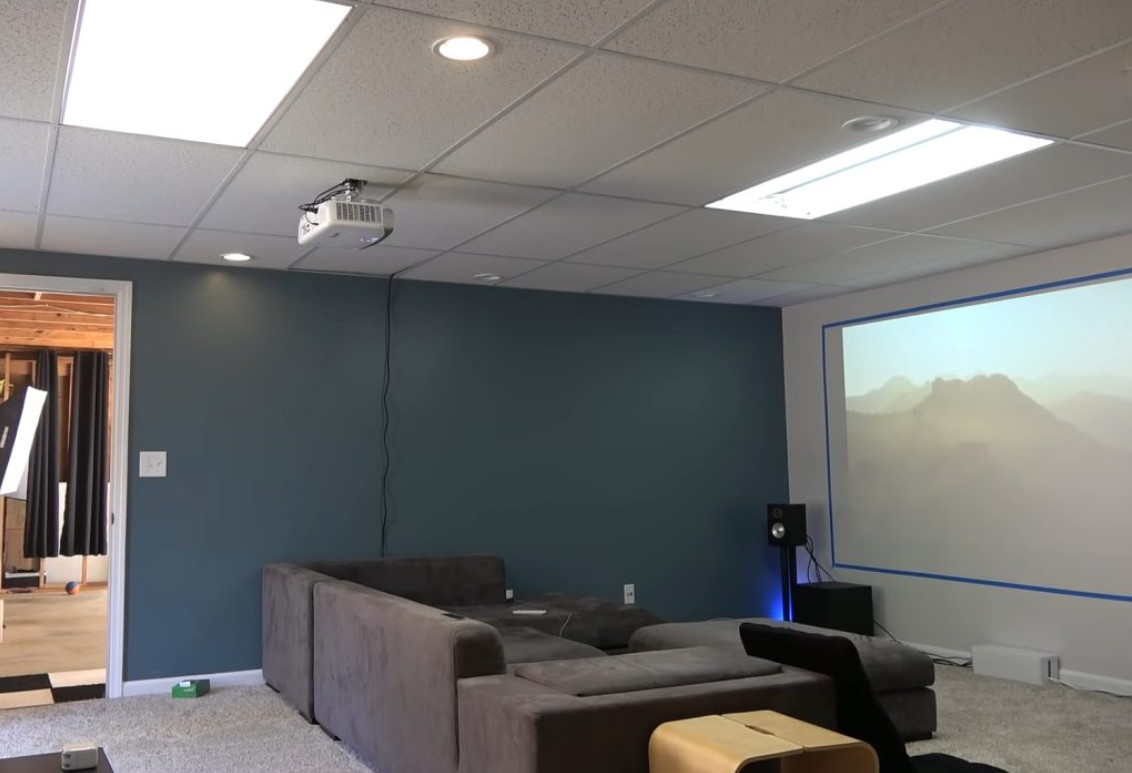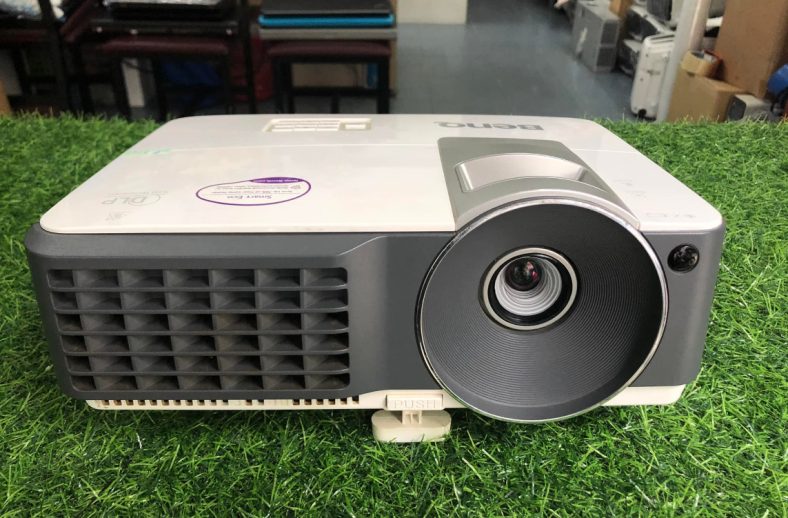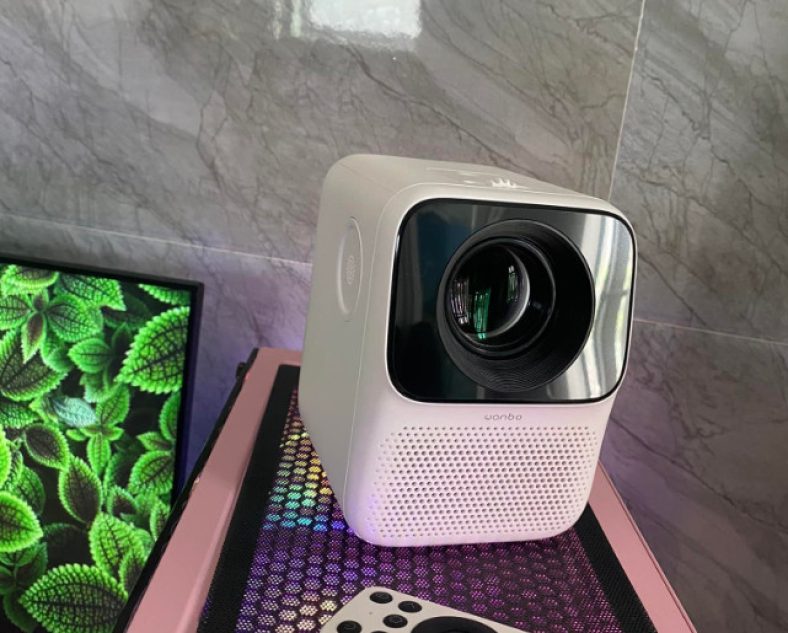Short Throw Vs Long Throw Projectors – Which is Better?
Are you looking for a projector to upgrade your home theater system? You may get confused with the “short throw” and “long throw” terms and want to know which one is more suitable for your needs.
So, which one should you choose? This post gives you an in-depth short throw vs. long throw projectors comparison and highlights their core differences to help ease your purchase decision.
Continue reading to find out!
Table of Contents
What Is A Throw?
In video projectors, a throw is a distance between the device lens and the projection screens or walls that receive the projector’s light. The throw ratio indicates the ratio between throw distance and the screen’s width.
The high-end projectors have adjustable lenses, allowing you to adjust the throw ratio flexibly. However, the older models usually have fixed lenses and a fixed throw distance.
Throw ratio and distance are often overlooked by customers, but they are the key factors to help you choose suitable projectors for a specific room interior.
Short-Throw Projectors
If your projector’s throw distance is less than three meters or nine feet, it belongs to the short-throw category. The regular throw ratio of short-throw projectors falls between 0.1 and 0.4, while modern devices can do better.
With the shorter throw distance, the projected light doesn’t have to travel a long distance to reach the projection panels. As a result, short-throw projectors deliver more consistent and sharper image quality.
The short-throw helps eliminate the disadvantages of the long throw projectors, but it also comes with some setbacks, which we will further discuss in the following sections.
Long-Throw Projectors
The long-throw projectors usually have larger throw distances (more than 9 feet). This feature allows you to install the device far from the projection panels or walls without losing image sharpness and quality.
The longer the throw distance, the further you can put the devices away from the screen without losing image quality.
For this reason, long-throw projectors are suitable for a large room where you need to install the device far away from the screen (on the ceiling, behind the wall).
Short Throw Vs. Long Throw Projectors
Here is the in-depth comparison of the two types regarding image quality, comfort, ease of installation, and cost. Each category is ideal for specific spaces and purposes, so consider the information carefully and pick your ideal device.
What Are The Main Differences?
The core difference lies in throw distance, which will affect image size, setup, and many other factors.
In short, the short-throw projectors are suitable for small rooms and spaces due to their short throw distance. This device is ideal for setting up near the projection screen (less than 3 meters) to produce the greatest image quality.
Meanwhile, long-throw projectors are more common in large rooms (classrooms, conference halls). They have longer throw distances (more than 9 feet) and usually come with larger screen sizes and lumen rates.
Related:
– DLP vs. 3LCD Projector
– What is Projector Lens Shift?
Image Size
You can calculate the image size by multiplying the throw distance with the throw ratio of your projector. The result is the projected screen’s width, and the aspect ratio is the screen’s height.
The high-end models with adjustable lenses don’t have a fixed image size. However, the pixels will be spread out on larger screen sizes and reduce the image quality.
As long-throw devices are used for projecting the images from a long distance, they often come with large screen sizes. Meanwhile, short-throw projectors focus more on image quality and sharpness.

Space And Installation
Long-throw models can be mounted on the ceilings or walls behind your back in the home theater system. Meanwhile, the short-throw projectors need to be placed near the screen to get the best image quality.
Whether you use the device at home or work sites, long-throw devices bring a cleaner and more professional setup. The device doesn’t get in your way or take up any extra space.
Also, you can hang or hide the connecting wires and power cables easier. Nowadays, projectors are controlled mainly by remotes, so there won’t be any problems if you cannot reach the main unit.
However, the long-throw products are not suitable in bedrooms or small rooms, where you need to set up the device at close distances. In this case, the short-throw models are the best option with the highest image quality and watching experience.

Brightness
A long-throw projector is not necessarily brighter than a short-throw one. The brightness depends on the lumen rates of the device. However, long-throw models often come with higher lumens.
As the light has to travel a longer distance to reach the panel, it needs to be brighter. Therefore, the higher the throw distance, the more lumens you will need. You should also consider ambient light to choose a suitable lumen rate.
Cost
There is a variety of models on the market with different designs, capacities, and features. A short-throw projector with modern features and greater capacity can be more expensive than a regular long-throw one and vice versa.
However, as long-throw devices are used for large setups and spaces, they need higher brightness and image resolution. These factors ensure that the images don’t get shaky or blurred on the large projection panels.
Higher brightness and resolution will increase the cost of the device significantly. Therefore short-throw projectors are a more affordable choice for home theater systems.

Pros And Cons Of Short-Throw Projectors
Pros
- Sharper image quality at short distances
- Ideal for putting behind the screen
- The light won’t get blocked by pass-by objects
- More affordable
Cons
- Take a lot of space if you can’t find an ideal spot
- Noisy to the nearby people
- Higher risk of vibration
Pros And Cons Of Long-Throw Projectors
Pros
- Great for viewing from a far distance
- High brightness
- Larger screen size
- Delivers a cleaner setup
Cons
- Generally more expensive
- Unsuitable for small rooms
Related:
– How to set up a Home Theater System with a projector?
Final Verdict: What Should You Choose?
To sum up, short-throw devices are suitable for setting up and viewing at close distances. Meanwhile, long-throw projectors deliver the greatest viewing experience at long distances from the projection panel.
It’s one key difference that you should remember when choosing between these two categories. Depending on the room size and your needs, pick the most optimal device.
Thank you for watching!





